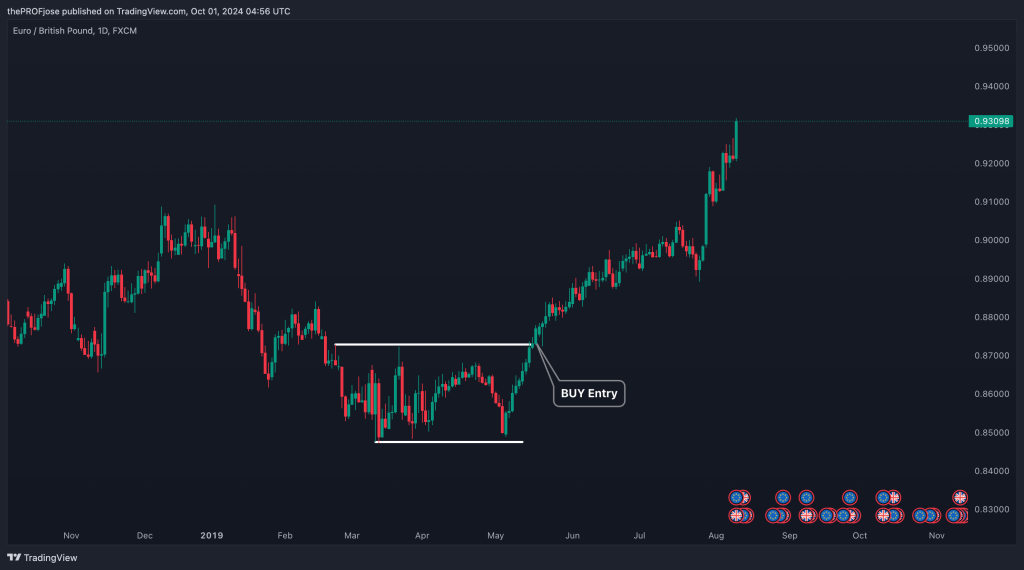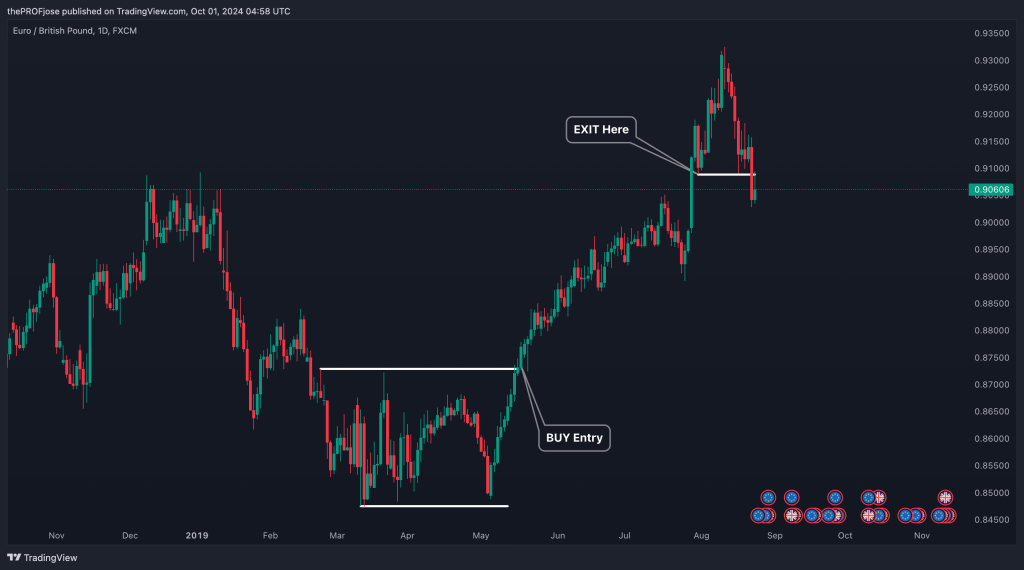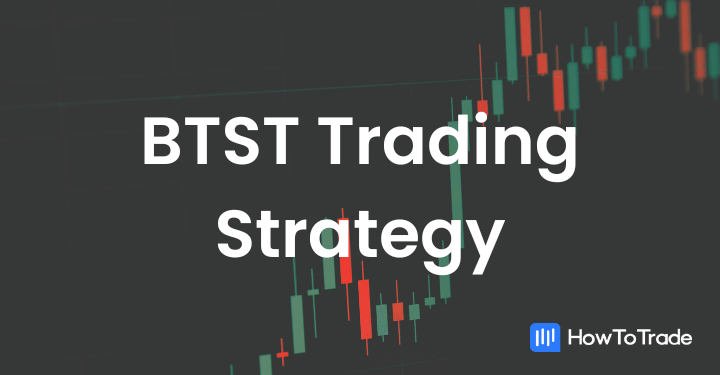
- Turtle Trading is a trend-following strategy that focuses on identifying and riding strong market trends.
- Developed in the 1980s, the Turtle trading experiment generated impressive profits, at which the Turtles reportedly earned a combined profit of around $175 million.
- The core principles and rules of the Turtle trading strategy include position sizing, entry and exit rules, and diversification.
The Turtle Trading Strategy came from one of the most fascinating stories in trading history. Back in the 1980s, two legendary traders—Richard Dennis and William Eckhardt—set out to prove that anyone could learn to trade successfully, even complete beginners. The result? A group of novice traders, known as the “Turtles,” were trained in a simple yet effective trend-following strategy that allowed them to consistently profit in the markets.
In this article, we’ll break down the Turtle Trading Strategy, showing you how it works and whether it still holds up today. Here’s what you can expect:
- The story behind the experiment and how it started.
- The specific rules that made Turtle Trading successful.
- A candid assessment of whether this strategy works in modern markets.
 Table of Contents
Table of Contents
What is Turtle Trading?
While some believe that expert-level skills require years of practice and natural ability, Richard Dennis and William Eckhardt had a different perspective when it came to trading. In fact, their belief was that anyone could be taught to trade profitably with the right rules and mindset. This idea went against the popular theory, highlighted in Malcolm Gladwell’s Outliers, for example, which suggests that it takes 10,000 hours of practice to master a skill. But Dennis and Eckhardt didn’t think that this applied to trading.
In the early 1980s, Dennis was widely recognized as a successful market legend, and together with his partner, Eckhardt, they launched an experiment to prove that trading success could be taught. They gathered a group of novice traders from various backgrounds—people with little to no experience in the world of finance. Over the course of two weeks, Dennis personally trained these individuals, teaching them the Turtle Trading Strategy.
At basic, the Turtle Trading system is a trend-following strategy. Rather than trying to predict the market’s next move, it focuses on identifying and riding strong market trends for as long as possible. Turtle traders followed strict entry and exit points, using predefined breakout levels to generate profitable trades, and avoid losing trades.
While the rules themselves seemed basic, it was the discipline to follow the original Turtle trading rules that separated successful traders from the rest. The Turtle experiment proved beyond a doubt that anyone could be taught to trade profitably as long as they followed the same principles Dennis and Eckhardt laid out. This structured approach, with a heavy emphasis on risk management and systematic trading decisions, was key to the significant profits many of the Turtle traders earned.
At basic, the Turtle Trading system is a trend-following strategy. Rather than trying to predict the market’s next move, it focuses on identifying and riding strong market trends for as long as possible.
Historical Performance and Notable Success Stories of The Turtle Trading Experiment
The Turtle Trading experiment was not only groundbreaking in its approach but also in its results. The group of novice traders—many of whom had no prior experience—generated impressive profits, solidifying the effectiveness of the trend-following strategy. Over just a few years, the Turtles reportedly earned a combined profit of around $175 million. This was an astounding achievement, especially considering the simplicity of the system they were following.
One of the most successful traders to emerge from the Turtle program was Jerry Parker, who went on to establish Chesapeake Capital and managed billions of dollars in assets. Parker’s success wasn’t an isolated case; many of the original Turtles continued to thrive in the trading world, leveraging the principles they learned to build long-term careers. Curtis Faith, another standout Turtle, reportedly made $30 million by the age of 19 during his time in the experiment, showcasing the profitability of the system when followed with discipline.
The historical success of the Turtle traders, despite their diverse backgrounds, underscores the potential of rules-based trend-following strategies. Even decades later, some of the original Turtles have continued to influence the industry, with many applying the core principles they learned to other financial markets and asset classes.
While the exact performance of each Turtle varied, the overall success of the group provided clear evidence that trading could be taught and mastered by novices with the right framework in place.
Over the course of just a few years, the Turtles reportedly earned a combined profit of around $175 million. This was an astounding achievement, especially considering the simplicity of the system they were following.
Principles and Rules of the Turtle Trading Strategy
So, what is the Turtle trading strategy all about? Well, this strategy is built around clear and systematic rules—no guesswork involved. These rules were designed to take advantage of strong trends in the market, and while the original Turtles followed them to the letter, they can also be adapted to modern trading tools and technologies.
1. Position Sizing
Position sizing is one of the fundamental Turtle Trading rules. To them, trading goes beyond when you trade. It also includes how much you trade.
Dennis and Williams believe that your position sizing would be based on the volatility of the asset that you are Trading. The main goal is to ensure that you don’t risk too much on a single trade.
The Turtles used something called units, where a unit represented a fixed percentage of their account. They calculated the volatility of the market using the Average True Range indicator (ATR). With the help of this indicator, they ensured that their students (affectionately referred to as “Turtles”) traded larger positions when the market was less volatile and smaller ones when it was more volatile while still risking the same amount of money.
The original Turtles were only allowed to risk a small percentage of their total account on any one trade—typically 1-2%. This keeps losses manageable and prevents emotional decision-making, which can lead to significant mistakes in trading.
The turtle trader also used stop-loss orders to automatically exit trades that went against them. The stop loss was set based on the ATR, allowing the trade to breathe while protecting capital in case the market turned unfavorable.
2. Entry and Exit Rules
Turtle Trading relies on breakouts to signal when to enter a trade. In other words, the Turtle trading strategy relies heavily on the breakout trading strategy.
A breakout occurs when the price of an asset moves beyond a previously established range, indicating the potential for a significant price movement. The Turtles used two main types of breakouts: the 20-day breakout and the 55-day breakout, depending on the market conditions and risk tolerance.

As you can see in the chart above, the strategy dictates that traders enter long (buy) positions when the price breaks above the highest high of the last 20 days.
On the other hand, they enter short (sell) positions when the price breaks below the lowest low of the last 20 days, indicating a downtrend.

Exiting trades is just as systematic as entering them. The Turtles would exit their positions when the price hit a specific reverse breakout level, typically the 10-day low in an uptrend or the 10-day high in a downtrend. This method locks in profits while preventing traders from holding on to positions that have already peaked.
This approach may sound simple, but it requires strict discipline. After all, following the rules—even when the market seems uncertain—was a key reason for the Turtles’ success.
Pro Tip: You don’t need a complicated strategy to consistently make money from trading. On the contrary, simple trading strategies with clear rules give you a higher chance of sticking to your rules, hence making consistently profitable trades from the market.
3. Diversification
At last, since Turtle Trading prioritizes staying long in the game, one way they ensure this is through diversification. So, instead of focusing on just one asset, the Turtles often spread their trades across various asset classes like commodities, currencies, and bonds. Unlike day and scalp trading, this strategy relies on a small number of trades with the goal of making large profits. In that sense, the most difficult aspect of the Turtle trading strategy is to learn how to choose the right trade and extend profits once a trader enters a profitable trade.
The Free Turtle Trading Strategy PDF
Here’s a free Turtle Trading PDF that may come in handy whenever you need it:
The Bottom Line – Does the Turtle Trading Strategy Work?
After exploring the history, principles, and mechanics behind the Turtle Trading Strategy, the pressing question remains: does it still work today?
The answer is—it depends. When Richard Dennis and William Eckhardt first introduced the Turtle Trading experiment in the early 1980s, it was a massive success. Their group of novice traders, known as the “Turtles,” followed the Turtle trading rules meticulously and were able to generate substantial returns—around $175 million. The reason behind this success was the strategy’s structured, data-driven approach, leaving no room for emotional decisions.
However, the markets have significantly evolved since then. The trading environment in the 1980s, which was favorable for trend-following systems, is quite different from today’s. With the rise of algorithmic trading, high-frequency trading, and increased volatility, market trends tend to be shorter and more unpredictable. This makes it more challenging for a strategy like Turtle Trading to consistently capture long-term profits.
That said, the core principles of the Turtle trading system are still valuable today. Concepts such as volatility-based position sizing, risk management, and using breakouts to ride trends are timeless and can be adapted to modern markets. Many traders, both institutional and retail, continue to apply these foundational ideas along with new trading ideas such as the smart money concept trading strategy to their own trading strategies, often with some modifications to better fit current market conditions.
Frequently Asked Questions
Before we wrap up, let’s address some of the most common questions about the Turtle Trading Strategy.
What is the Turtle Trading experiment?
The Turtle Trading experiment was a real-life test conducted by legendary trader Richard Dennis and his partner William Eckhardt in the 1980s. They sought to prove that successful trading could be taught, not just inherited as a natural talent. They recruited a group of novice traders, known as the “Turtles,” and trained them in a strict, rules-based trend-following system. The experiment was a success, with many of the Turtles making substantial profits by following Dennis’ strategy.
What is the Turtle Option strategy?
The Turtle option strategy is a variation of the original Turtle Trading system, adapted for trading options rather than traditional asset classes like stocks or commodities.
Is Turtle Trading profitable?
Turtle Trading can be profitable, but its success largely depends on market conditions and the trader’s discipline. The strategy performed well in the 1980s when trends were more sustained and less affected by the technological advances in today’s markets, such as algorithmic trading. In modern times, trends tend to be shorter, which can make it harder for Turtle traders to capture long-term profits. However, when applied with discipline and adapted to current market conditions, the strategy’s core principles of risk management and trend-following still hold potential for profitability.
Risk Disclosure: The information provided in this article is not intended to give financial advice, recommend investments, guarantee profits, or shield you from losses. Our content is only for informational purposes and to help you understand the risks and complexity of these markets by providing objective analysis. Before trading, carefully consider your experience, financial goals, and risk tolerance. Trading involves significant potential for financial loss and isn't suitable for everyone.





